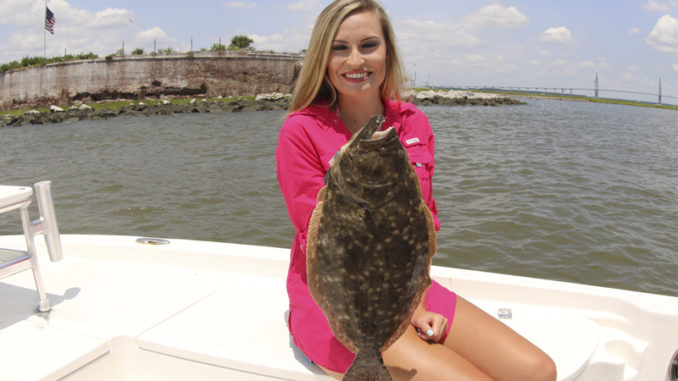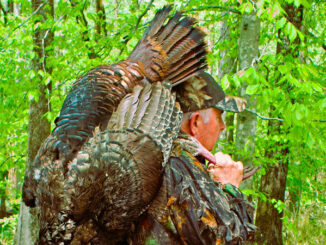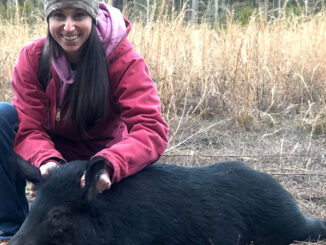
SCDNR proposing several changes to flounder rules
South Carolina anglers are likely to see some changes in the state’s flounder regulations soon. And according to SCDNR Fishing Outreach Coordinator Matt Perkinson, the changes could be quite drastic.
And that’s for good reason, Perkinson said.
The SCDNR doesn’t have the authority to make new laws. The organization can only make recommendations to the state’s General Assembly. The General Assembly then votes on these proposals. This lengthy process is likely why the Palmetto State is somewhat late to the party when it comes to making changes to its flounder regulations.
North Carolina took a drastic step last year, closing the season for months, then holding a short season in the fall. They’re on the same schedule this year. Anglers in North Carolina can currently keep no flounder until the season reopens.
In South Carolina, anglers can catch and keep flounder year-round. But the latest SCDNR proposal will change that, if state lawmakers vote the recommendations into law. A closed season is one of three major changes SCDNR would like to see, according to Perkinson.
“We have suggested a combination of options that would maximize anglers’ access to the fishery while still reducing catch enough to achieve that goal of a full recovery,” Perkinson said.
The list of options includes:
- Reducing the bag limit from 10 flounder per person, per day to two flounder per person, per day
- Reducing the boat limit from 20 flounder per day to six flounder per day
- Instituting a fishing season from July 1 to Oct. 31
These changes, said Perkinson, are necessary due to the decline in the southern flounder population throughout the southeast region. He stressed that it isn’t a state problem, but rather a much bigger one.
“Flounder don’t typically move all that much within a given season. (But) there is some movement of fish between states over time and mixing of larvae when adults move offshore during winter to spawn. As a result, the flounder between N.C. and the east coast of Florida are interconnected and considered to be part of the same ‘biological stock,’” he said.
And results from numerous studies among fisheries scientists from the Carolinas, Georgia, and Florida have all come to one conclusion — that the southern flounder’s population in this region has declined at an alarming rate within the last decade.
Despite concerns voiced by some anglers, this isn’t a guessing game played by scientists based on a few anglers complaining that they can’t catch any flounder. Within South Carolina alone, two major inshore monitoring programs — trammel net surveys and electrofishing surveys — have been sampling the state’s estuaries for decades. The numbers gathered there simply don’t lie. And the fact is, those methods produce far fewer fish now than they did 10 years ago.
Fisheries biologists aren’t blaming anglers for the flounder decline
Many recreational anglers, especially those from North Carolina, blame the fish’s decline on commercial netting. But South Carolina has an extremely small commercial flounder fishery. And according to SCDNR’s data, 99% of the state’s flounder catch comes from recreational anglers.
Gigging is an easy target to blame from traditional rod and reel anglers. But the science doesn’t bear that out.
Click here to read: Is flounder gigging the reason for the fish’s decline
Admittedly, those participating in gigging do have more success on the average than rod and reel anglers. However, far fewer sportsmen participate in gigging. And those who do are limited to the number of nights they can gig due to many factors.
The fault of the fish’s decline isn’t easy to pinpoint. And blaming a single group isn’t productive or even based in reality, according to fisheries biologists. The fact is, SCDNR, NCWRC, or any of the other state and regional agencies are not blaming anyone. Many factors, some completely out of the control of anglers in any way, all contribute to the decrease in the flounder population.
But one thing’s for sure — the only option people have to help the fish’s population is to decrease the number of fish we harvest. And Perkinson said anglers realize this fact, based on conversations he and other SCDNR personnel have had with the public.
Most anglers recognize the decline
“Over the last year, we’ve been speaking with many of you throughout the state to get input as we make potential plans for a rebuilding effort. Another 2000 of you answered the call and responded to our online survey,” he said.
And here are the main takeaways from those surveys:
- Anglers recognize the decline in flounder, stating that they are catching fewer and smaller fish than they have in the past
- An overwhelming majority would like to see the fishery recover quickly
- Anglers support a combination of management options that would get us to that goal
Some anglers may see a reduction in the creel limit from 10 to two as drastic. Perkinson said that’s what it’s going to take to help the fish recover. He said that reducing it from 10 to five does little to nothing, because many anglers don’t consistently catch more than five keeper-sized flounder per trip anyway. Therefore, this would make no difference.
Perkinson said the changes North Carolina made last year are going to have a positive impact on the population. And he said South Carolina is ready to do its part. And that, he said, is necessary for the fish to truly benefit from the sacrifices being asked of North Carolina anglers.
“This is a regional decline that will need a regional solution,” he said.





Be the first to comment